#midnight sun redux
Explore tagged Tumblr posts
Text
✨ ts3 resources
default replacements:
skin
sarhra eyes
pet eyes
lighting mod
brows
beards
fairy wings
little wisps
cas screen (latte)
skintones:
neiuro
brntwaffles
pyxis
noodlesims
fawkes
sectumsimpra
svmblr
hair retextures:
poisonfireleafs
pandelabs
chazybazzy
plumblobs
plumdrops
ifcasims
brows:
brntwaffles
makeup:
lashes set 1 / set 2 / eyelash sliders
eyeliner
blush 1
blush 2
blush 3
lipstick 1 / 2 / 3
dry lipstick
nose makeup
makeup set
skin details:
freckles part 1 / part 2
moles
birthmark
body birthmarks and freckles
cheek shadows
sliders:
slider masterlist
shoes:
pixicat
accessories:
septum piercings
braces
patterns:
cathilark
nraas mods:
careers
debug enabler
dreamer
error trap
go here
master controller (+ cheats, integration)
overwatch
register
saver
story progression
tempest
woohooer
portrait panel
traffic
other mods:
traits enabled for all ages
taxi charge
no fridge shopping
sims drinks
pregnancy controller
scolding + punishment tweaks
supernatural babies
random genetics
super hampers
sleep on sofa
faster toddler training
only important memories
lose fat / gain fitness slower
retuned attraction system
deep conversations
fewer credits for degrees
cas details 8x2
misc:
smoothness patch
reshade preset
rabbit hole rugs
poseplayer
poses
screenshot backdrop
world fixes
regul save cleaner
worlds:
fairy realm
magic town
roseward
mairin
hylewood edit
deery meadows
shigeria
hidden springs retextured
riverview redux
challenges:
random legacy
awesomesauce legacy
midnight sun
zombie apocalypse 1 / 2
youtube:
acottonsock (tutorials + let’s plays)
cjplays (world reviews)
#time to post my resources#tysm for the welcomes and follows <3#yall have amazing blogs#the sims 3#ts3#ts3cc#sims 3#ts3 resources#maxis match#ts3 maxis match
1K notes
·
View notes
Note
if you could give a single pokemon to each pdude what would you choose?
P1 - Houndoom. Ultra Moon pokedex: Identifiable by its eerie howls, people a long time ago thought it was the grim reaper and feared it.
P2 - Amped Toxtricity. Shield pokedex: This short-tempered and aggressive Pokémon chugs stagnant water to absorb any toxins it might contain.
P3 - Rockruff. Sword pokedex: This Pokémon can bond very strongly with its Trainer, but it also has a habit of biting. Raising a Rockruff for a long time can be challenging.
P4 - Nickit. Sword pokedex: Aided by the soft pads on its feet, it silently raids the food stores of other Pokémon. It survives off its ill-gotten gains.
Redux - Mega Houndoom. Ultra Moon pokedex: Houndoom's entire body generates heat when it Mega Evolves. Its fearsome fiery breath turns its opponents to ash.
Redux's Co Op Dudes - Houndour. Ruby/Sapphire pokedex: Houndour hunt as a coordinated pack. They communicate with each other using a variety of cries to corner their prey. This Pokémon's remarkable teamwork is unparalleled.
Corkscrew - Machoke. Silver pokedex: The muscles covering its body teem with power. Even when still, it exudes an amazing sense of strength.
Movie - Psyduck. Stadium pokedex: Appears unaware and totally vacant. However, if its chronic headache worsens, it starts exhibiting peculiar powers.
Doe - Alolan Persian. Ultra Sun pokedex: In contrast to its lovely face, it's so brutal that it tortures its weakened prey rather than finishing them off.
Royale - Luxray. Pearl pokedex: When its eyes gleam gold, it can spot hiding prey--even those taking shelter behind a wall.
BD - Gliscor. Legends: Arceus pokedex: It glides soundlessly on pitch-black wings and sinks sharp fangs into the throat of its prey. It takes on a look of satisfaction once it has entirely drained its prey of blood.
OD - Mega Gyarados. Sun pokedex: Mega Evolution also affects its brain, leaving no other function except its destructive instinct to burn everything to cinders.
Java - Midday Lycanroc. Moon pokedex: When properly raised from a young age, it will become a trustworthy partner that will absolutely never betray its Trainer.
Novel - Midnight Lycanroc. Ultra Sun pokedex: It has no problem ignoring orders it doesn't like. It doesn't seem to mind getting hurt at all—as long as it can finish off its opponent.
#postal dude#anon#replies#pokemon#p1#p2#p3#p4#redux#corkscrew#movie dude#postal doe#royale#bd#od#java#novel dude
8 notes
·
View notes
Text
Fémjelzés – a hét újdonságai (2023. november 6-12.)
Fémjelzés – a hét újdonságai (2023. november 6-12.) - https://metalindex.hu/2023/11/13/femjelzes-a-het-ujdonsagai-2023-november-6-12/ -
A november második hetében született underground porontyok listája ezúttal is száznál több lemezt kínál böngészésre.
Acid Throne – Kingdom’s Death (stoner/sludge/doom metal) Adventum Diaboli – Mørke (black metal) Æolian – Echoes of The Future (melodikus death metal) Aglo – Build Fear (death/doom metal) Ammonium – Erased Existence (death metal) Ancestro – Tierra desangrada (thrash metal/hardcore) Athiria – Conjure the Beast (death metal) Belialed – Beyond Resigned (melodikus black metal) Burn Ritual – Grave Watcher (stoner/doom metal) Catch the Giant! – Midnight Tales Pt. I: Nighttime (power/heavy metal/hard rock) Cold Eternity – Space Wanderer (progresszív metal) Collapsed Mainframe – Theater of Tyranny (doom/death metal/blackened grindcore) Cranio – 11:11 (heavy metal/hard rock) Crescendium – Within (progresszív/melodikus death metal) Cydron – Timewarrior (black metal) Desynchronized – Existential Nothingness (death metal) Dilim – Lagim (black metal/dungeon synth) Dissona – Dreadfully Distinct (EP) (avantgárd/progresszív metal) Diviner – Avaton (heavy metal) Drowning in Formaldehyde – Nightmares and Seroquel (slam/brutális death metal) Dry and Shattered – Systemic Turpitudes (death metal/hardcore) Empire of Disease – Shadows in the Abyss (metalcore/melodikus death metal) Extinkt – Trinity Redux (thrash metal) Fallen Utopia – Ruin (death metal) Fog Warrior – Of Strength and Sadness (atmoszferikus black metal) Fog Warrior – Ruined (atmoszferikus black metal) Gama Bomb – Bats (thrash metal) Halvar – State of the Nation (death/thrash metal) Hard Excess – The Nations Dust (heavy metal/hard rock) Helmet – Left (heavy/groove metal/alternatív rock) Hinayana – Shatter and Fall (melodikus death/doom metal) Hubris Debris – Reclamation (metalcore/groove metal) Hypaethral – Hypaethral (technikás death metal) Inmisericorde – Alquimia de sombras (death metal/hardcore/grindcore) Innominate – Foreboding (death metal) Isometry – Break the Loop (progresszív metal) Ivann – Eternal Decomposition (death/thrash metal) Katrofy – A Velha Estrada (black metal) Krahnholm – Конец трагедий (atmoszferikus black metal) Krakh – Strangeled Hope (atmoszferikus/post-black metal) Kungagraven – Hassjäger und nackte Percht (black metal) Left Cross – Upon Desecrated Altars (death metal) Left Eye Perspective – Conundrum (progresszív/stoner metal) Lodestar – Polaris (doom metal/rock) Lord Kinbote – Calm like Castle Bravo (stoner metal/grunge) Luminous Path – The Dark Path to Enlightenment (nyers black metal) Luvart – Until the Void (black metal) Marsh of Swans – Heartwood (atmoszferikus post-black metal) Mephorash – Krystl-Ah (black metal) Metal Life Crisis – Theatre of Fire (heavy/progresszív metal) Mindead – Breathing Fire (groove/thrash metal) Morildraugen – Desolate (black metal/dungeon synth) Mørkdryad – Cold Possession (black metal) New Skies – The Legacy of Avelore (progresszív/szimfonikus power metal) Night Crowned – Tales (melodikus black/death metal) Niphredil – The Final Star (atmoszferikus black/doom metal) No Man Eyes – Harness the Sun (heavy metal) Northern Eye – Under Siege (doom/gótikus metal) Odd Crew – Dark Matters Part II (groove/alternatív metal) Okrütnik – Krwawy pontyfikat (heavy/speed/black metal) Opvs Nostri – Velas Negras Sobre o Altar da Morte (black metal) Passage – Oblique (post-rock) Perilous Grave – Soilsiú (szimfonikus black metal) Phantom Winter – Her Cold Materials (sludge metal) Phorceps – License to think (heavy metal) Plague Rider – Intensities (experimental/technikás death metal) Pyreficativm – K’aahz Menoh (black metal/dark ambient) Pyrolatrous – Inveterate (blackened melodikus death metal) Rascal – Lost Beyond Reason (heavy/power/speed metal) Rigorious – Night of Retribution (power metal) Roman Master – Death (black metal/ambient) Sanctum Sathanas – Into the Eternal Satanic Damnation (black metal) Sangre Maldita – Alma negra (gótikus/death metal) Sâver – From Ember and Rust (sludge/post-metal) Secret Sphere – Blackened Heartbeat (melodikus power/progresszív metal) Shylmagoghnar – Convergence (progresszív/melodikus death/black metal) Sodom – 1982 (EP) (thrash metal) Sons of Sounds – Seven (progresszív metal) Spectral Spectrum – Scary Stories to Tell in the Dark (black/heavy metal) Stargate – Escaping the Illusion (heavy/power metal) Stille Volk – Le Dieu D’automne (középkori/kelta folk) Stögö – Vampyre Gods (heavy metal/synthwave) Sutratma – Images Beyond the Self (funeral doom/death metal) Sutratma – Realms of Eternal Immolation (funeral doom/death metal) Swarzo – The War You Sought (szimfonikus/power metal) Tarja – Dark Christmas (szimfonikus metal/rock) Temple Balls – Avalanche (melodikus heavy metal/hard rock) The Color of Rain – Oceans Above (progresszív/post-black metal) The Neologist – Between the Darkness and the Fade (melodikus death metal) The Ritual Aura – Heresiarch (technikás death metal) Ulvdalir – Ancient Throne of Unholy Ingria (black metal) Under a Spell – Freya (heavy metal) Uvikra – Comfort… (progresszív rock/metal) Varamus – Luminous Affliction (melodikus/technikás death metal) Vastum – Inward to Gethsemane (death metal) Venomous Agent X – The War Will Feed Itself (death/black metal) Verilehto – Kuoleman siipien havina (black metal) Vestígio – Vestígios (black metal) Voracious – Path to Death (death metal/hardcore) WarBand – OverAmped (thrash metal/punk) Wastelander – Endless Survival (black/thrash metal/crust) Weightless World – Sleepwalker (progresszív metal/metalcore) Welcome to Pleshiwar – Apostasy (melodikus doom/death metal)
0 notes
Text
Why Maui Burned
Lahaina’s wildfire was the deadliest in the U.S. in more than a century. Now the community is grappling with the botched response as it tries to rebuild.
— By Carolyn Kormann | October 30, 2023

The Lahaina fire reached temperatures more than a thousand degrees hotter than the temperature on Venus. Photographs by Bryan Anselm/Redux for The New Yorker
At 4 P.M. On August 8th, Shaun Saribay’s family begged him to get in their car and leave the town of Lahaina, on the Hawaiian island of Maui. The wind was howling, and large clouds of smoke were approaching from the dry hills above the neighborhood. But Saribay—a tattooist, a contractor, and a landlord, who goes by the nickname Buge—told his family that he was staying to guard their house, which had been in the family for generations. “This thing just gonna pass that way, downwind,” Saribay said. At 4:05 p.m., one of his daughters texted from the car, “Daddy please be safe.”
Within ten minutes, it became clear that the fire had not passed downwind. Instead, towering flames were galloping toward Saribay’s house. He got in his truck and drove to Front Street—Lahaina’s historic waterfront drag—and found gridlock traffic. Saribay, a stocky forty-two-year-old man with a tattoo covering the left side o f his face, texted his daughters. “Don’t worry. Dad’s coming,” he wrote. Then he lost cell service. At 4:41 p.m., he pulled into the one large open space he could find, a parking lot behind the Lahaina United Methodist Church, which had just started to burn.
Saribay had recently built a closet at the church, so he knew where all the water spigots were. He filled buckets and water bottles and scrambled to find neighbors’ garden hoses. With the help of three other men who had retreated to the lot, he soaked the church, again and again, fighting a three-story ball of fire with the equivalent of a water gun. At times, the men were stomping, even peeing, on sparking debris. Saribay recorded a video for his kids: “It’s bad. All around—crazy,” he said, panning the hellscape behind him. “Remember what Dad said, eh? I’ll come back.” Almost as if to reassure himself, he added, softly, “I know you guys safe.”
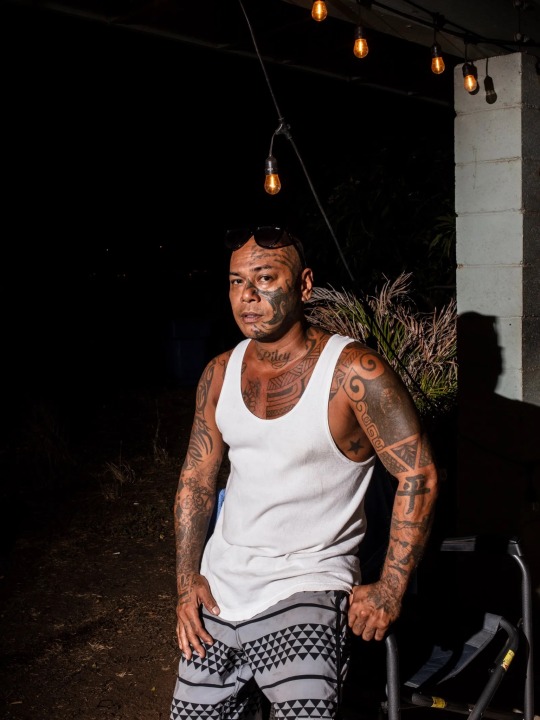
Shaun (Buge) Saribay, a tattooist and landlord, lost three houses, his tattoo parlor, and his boat in the fire. He has become a hero in the community, after he helped keep the neighborhood of Leiali‘i from burning down.
Saribay recorded videos throughout the night as he fought the fire. Despite his efforts, flames consumed the church. Well after midnight, the men tried to save a neighboring preschool, but that caught fire, too. When the sun rose and the wind began to ebb, Saribay got on an old bike and rode around town looking for other survivors. “I’m seeing fucking bodies every fucking way,” he recalled. “I’m pedalling through charcoal bodies and bodies that didn’t have one speck of burn—they just died from inhalation of black smoke. I felt like I was the only fucking human on earth.”
The Wildfire in Lahaina Was The Deadliest in the United States in more than a century. Ninety-nine people have been confirmed deceased, although for weeks the death toll was thought to be even higher, with police reporting that more than a hundred bodies had been recovered. In a town of nearly thirteen thousand people, at least seventy-two hundred were displaced. Twenty-two hundred structures were damaged or destroyed, and the estimated cost to rebuild is five and a half billion dollars. “I have been to most major disasters in the United States in the past decade. This is unprecedented,” Brad Kieserman, a senior official with the American Red Cross, said. “The speed of the fire, the level of fatality and physical destruction, the level of trauma to those who survived—it’s unspeakable.”
The destruction may have been unprecedented, but the fire itself was not. Public-safety officials, scientists, and activists had warned for years of the wildfire risks in Maui, owing to the growing population and the dryness of the island. “It was a ticking time bomb,” Willy Carter, a conservationist who studies native Hawaiian ecosystems, said. “The bomb went off.” Weeks before the disaster, conditions in parts of the state had been categorized as “severe drought,” and on August 4th the National Weather Service warned of hazardous fire conditions in the coming days. With a high-pressure system north of Hawaii and Hurricane Dora spinning hundreds of miles to the south, forecasters predicted that strong winds would be blowing, allowing flames to spread fast.
At 12:22 a.m. on August 8th, a brush fire ignited in Olinda, in the mountains of Central Maui, prompting evacuations. At 6:37 a.m., thirty-six miles away, another brush fire ignited, in a bone-dry field bordering Lahaina Intermediate School. Hard winds had toppled utility poles, and flying sparks from downed power lines likely started the blaze. (The official cause is still under investigation, according to the Maui Fire Department.) Nearby residents were ordered to evacuate within three minutes. By 10 a.m., the county announced, via Facebook, that the Lahaina fire was “100% contained,” but that a main road was closed.
Around 3 p.m., people noticed smoke clouding the sky near the school. With the wind gusting more than seventy miles per hour, the fire had flared up again in the same area. During the next hour, the fire hit “crossover”—a term used to describe a moment when the relative humidity drops below the temperature in Celsius. This allowed the blaze to tumble freely and grow exponentially faster, exceeding firefighters’ capabilities. All they could do was try to save lives.
It would be difficult to overstate the horror of these hours, the disorientation of the hazy twilight caused by toxic smoke, the searing wind and glowing ash, the stark terror of being surrounded by tall flames, the suffocation. At various times, Maui police, in coördination with the power company, closed most of the roads out of town, because of tangles of downed lines and branches, but also because of a fear that some of those roads would direct people into the fire. Evacuees were herded onto Front Street, where traffic was at a standstill. Some people abandoned their vehicles and hurled themselves into the ocean. The water’s surface itself seemed to be smoking, making it hard to breathe. One group held on to wreckage that had fallen in the water; others waded for hours, trying to dodge or douse the embers falling on their heads.
By 7 p.m., the docks and boats in the harbor were lit up as if in a coal-fired oven, the roar of the flames broken by a staccato of exploding propane tanks. In the ocean, the current was pulling weaker swimmers out to sea. Coast Guard boats were crisscrossing the water, barely able to see through the smoke. They ultimately rescued seventeen people from the water and forty from the shore, and recovered one body the next day.
During the fire, the county’s command-and-communication system fell apart. The county sent one emergency cell-phone evacuation alert at 4:16 p.m., after the fire was already moving through town, but the order was just for a single neighborhood. At 6:03 p.m., while the fire was incinerating Front Street, and while people were struggling in the sea, Maui County’s mayor, Richard Bissen, appeared on a local news broadcast, calmly sitting in his office on the other side of the island. “I’m happy to report that the road is open to and from Lahaina,” he said, seemingly unaware of the inferno under way. The county did not issue online evacuation orders for other parts of town until 9:45 p.m. The winds finally subsided at dawn.
Maui Was Formed By Two Shield Volcanoes about two million years ago, becoming the second-largest island in the Hawaiian archipelago, the most remote chain of inhabited islands on earth. Lahaina, which means “cruel sun,” sits on the leeward side of Maui, below the western mountains, Mauna Kahālāwai, which roughly translates to “house of water.” The highest peak is one of the wettest places in the world, historically receiving about three hundred and sixty-six inches of rain per year.
Hawaiians built their communities around the watershed. Their word for water, wai, has many meanings: blood, passion, life. Lahaina—even though it was relatively hot and dry—became, because of its water supply, a cornucopia, replete with irrigated breadfruit, banana, and sugarcane crops, terraced taro patches, and fishponds. In the early nineteenth century, Lahaina was the capital of the Hawaiian Kingdom. The king lived in a coral-block palace on an island in the middle of a pond. Residents could paddle around town.
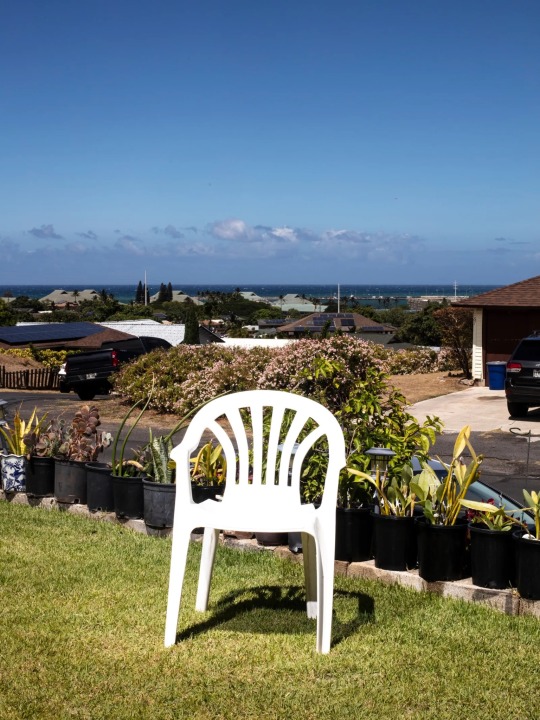
Alfredo Galinato, a seventy-nine-year-old Filipino immigrant, died in the fire. He once worked as a groundsman at the Westin and loved taking care of the hotel’s parrots.

Two of Galinato’s sons, James (left) and John (right), and his wife, Virginia.
During the American Civil War, the agricultural economy that sustained Southern farmers collapsed, and Hawaii became a primary source of sugar. But sugarcane is a thirsty crop. One ton of sugar requires a million gallons of water. To meet that demand, private companies producing sugar (and, later, pineapples) rerouted the flow from Maui’s watersheds, building concrete ditches, tunnels, pipes, flumes, siphons, and trestles across the island. European ranchers introduced non-native, drought-resistant African grasses—guinea, molasses, and buffel—for grazing livestock. In less than five decades, the island’s landscape and ecology were dramatically altered.
Agriculture declined in the late twentieth century, and plantation owners abandoned vast swaths of farmland, allowing the non-native grasses to proliferate. Instead of restoring the steep mountain streams, they left their diversions in place—in some cases, dumping water into dry gulches, or directly into the ocean—or used them to develop beachfront resorts, with lush gardens, swimming pools, and golf courses. By 1996, as Carol Wilcox writes in her chronicle “Sugar Water,” “competition for water had met the limits of the resource in Lahaina.” That same year, the newly formed West Maui Land Company started buying abandoned plantations (and their valuable irrigation systems) and creating new subdivisions.
Natural wildfire on Maui used to be rare. The high-elevation endemic forest acted like a sponge—capturing fog and rain, recharging aquifers, and releasing water downstream. But land development and the encroachment of invasive species are shrinking this ecosystem. “Towns are now, instead, surrounded by tinder-dry invasive grasses that just go up in an instant,” Carter told me.
In the past decade, Maui has faced periods of severe drought, exacerbated by climate change. Parts of the island got so dry during the past two years that the county limited residential water use. Hotels did not face restrictions. Fodor’s Travel included Maui on its 2023 “No List,” which warns against visiting regions that are suffering from environmental threats. And yet tourism in Maui remained steady.
Native-Hawaiian-sovereignty groups have long been fighting for stream restoration and more water control. According to the state constitution and a series of landmark court cases, Hawaii’s water must be held in a public trust for the people’s benefit, which includes the use of water for traditional and customary practices, such as taro farming. Private developers are required to follow streamflow standards, and must get approvals from the state’s Commission on Water Resource Management if they want to divert more water than their usual allotment.
On August 10th, as fires in Olinda continued to burn, the governor, Josh Green, suspended the water code. The same day, Glenn Tremble, a partner at the West Maui Land Company, wrote a letter to the water commission stating that on August 8th he had asked to divert stream water to the company’s reservoirs, south of Lahaina, to help put out the flames. A water commission deputy director named M. Kaleo Manuel delayed the diversion until that evening, explaining that Tremble first needed to check with a downstream taro farmer who relied on the stream to fight fire on his property.
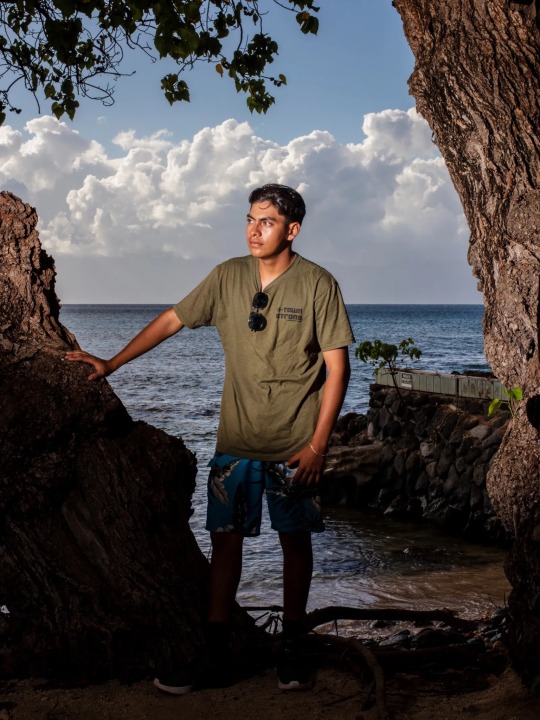
Three children died in the Lahaina fire. Josue Garcia Vargas, pictured above, lost his brother, fourteen-year-old Keyiro Fuentes, who was at home, asleep with the family dog, when the blaze swept onto the street.
That stream is not connected to the county’s water network, which supplies Lahaina’s fire-hydrant system. Moreover, the day’s heavy winds meant that helicopters could not use those reservoirs to fill water bombs (known as Bambi Buckets)—they could not fly at all. Still, many were eager to blame the Native Hawaiian water deputy and, by extension, the water code. (A headline in the New York Post read, “Hawaii official concerned with ‘equity’ delayed releasing water for more than 5 hours as wildfires raged.”) Manuel was reassigned to another department.
Peter Martin, West Maui Land’s co-founder and C.E.O., told me that protecting water for Native Hawaiian cultural practices was “a crock of shit,” and that invasive grasses and “this stupid climate-change thing” had “nothing to do with the fire.” He felt unfairly demonized by activists: “They’re trying to paint this picture that I’m a colonialist.” The real problem, he said, was the water commission and its code, which was so overbearing that it prevented him from replacing dry grassland with irrigated, landscaped parcels, or even small hobby farms. Maui’s lands, he added, “weren’t being used as God intended.”
Sixteen Days After the Fire, Maui County, with help from the F.B.I., released a list of three hundred and eighty-eight missing people. This was a distillation of a larger list, with more than a thousand names, that had been assembled from potentially unreliable sources—online groups, anonymous calls—and contained redundancies and errors. (Many individuals had the strange experience of seeing the list and learning that the F.B.I. thought they were missing.) The estimated death toll had remained the same since August 21st, when the police announced that they had recovered a hundred and fifteen bodies.
Two blocks from Saribay’s house, Alfredo Galinato, a seventy-nine-year-old Filipino immigrant, had lived with his wife, Virginia, and their son James, who is mentally disabled. When the fire approached, Galinato told James to run to Safeway, where Virginia worked. Then Galinato climbed onto his roof with a hose to soak the house, just as he had done during previous fires. Virginia and James survived, but Galinato was now among the missing. His two other sons, Joshua and John, who were not in Lahaina on August 8th, went to the burn zone to look for their father. “Everything was burned to dust,” Joshua told me. After searching for seventy-two hours, they heard that authorities were collecting DNA samples from people with missing relatives, and they went to a community center to get their cheeks swabbed.
Following the fire, forensic anthropologists, dentists, pathologists, and fingerprint and X-ray technicians flew to Maui, to aid the overwhelmed coroner’s office. Urban search-and-rescue teams, deployed by fema, started working with cadaver dogs across the five and a half square miles that had burned.
The Lahaina fire reached temperatures more than a thousand degrees hotter than the temperature on Venus. Four thousand vehicles were caught in the flames, and almost none of them were left with tire rims. “There were rivers of melted aluminum down the streets,” Stephen Bjune, the spokesperson for fema’s Urban Search and Rescue Team, told me. But the fire also moved in mysterious ways. A truck on Front Street had been full of glass bottles for recycling, all of which melted. Five feet away, a single silver minivan was unmarred, as if it were still sitting in traffic.
It was so hot in the burn zone that the dogs could work only in quarter-hour shifts. About fifteen per cent of the discovered remains were intact enough to obtain fingerprints from—that is generally the quickest route to identification. In another thirteen per cent, forensic dentists were able to identify people from their teeth. In two per cent, medical hardware—such as a pacemaker—was used to make identifications. But, for about seventy per cent of the victims, the experts needed DNA. In the majority of those cases, there were still significant amounts of tissue. In a few cases—the most difficult ones—there were only ashes and small fragments of bone.
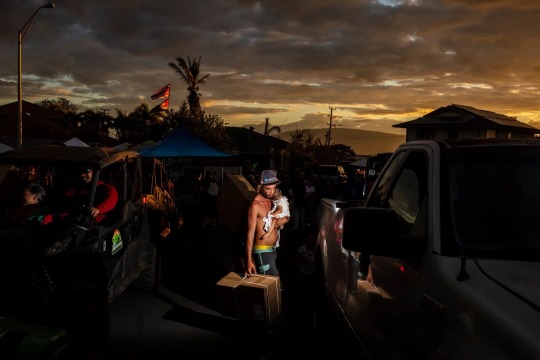
A resident picks up an air purifier from outside Archie Kalepa’s house, in Leiali‘i. Within forty-eight hours of the fire, the house had become one of Maui’s first community-organized emergency hubs.
The DNA analysis was conducted with the help of ande Rapid DNA, a biotech and public-safety company. ande manufactures a hundred-pound printer-size instrument that can generate a DNA profile, or “fingerprint,” in two hours. It can analyze five samples at a time—drops of blood, pinhead-size bits of liver, or fragments of bone. Richard Selden, the company’s founder and chief scientific officer, said that he and his team initially developed the instrument for the United States military’s counterterrorism operations in the Middle East, so it was designed to be portable and rugged.
The DNA fingerprints were compared with reference samples that families, like the Galinato brothers, had provided. The problem was that many family members were not submitting samples. Some authorities attributed this to a lack of trust between residents and the government, which went back more than a century, to colonization. Officials launched a publicity campaign emphasizing that the DNA samples would be used only by ande, and would not be used by the government for tracking people.
Alfredo Galinato was one of the first victims to be identified using the rapid-DNA machine. He had worked as a groundsman at the Westin, near Lahaina, for twenty-five years, and loved taking care of the hotel’s parrots. I met his family across the island, at the house of his son John’s fiancée, about a week after they received confirmation of his death. John, a carpenter, looked just like his father—with a gentle, open face and the strong, scrappy build of a former high-school state wrestling champion. He said that he felt blessed to have found out about his dad relatively quickly, compared with all those who were still searching.
Later, as I was driving back to Lahaina, John sent me a text, written as if his father were still alive. “Idk if I mentioned. My dad is a hard working man, dependable,” he wrote. “I can count on him.”
A Strange Scale of Tragedy had developed on Maui. Those who hadn’t lost loved ones might still have lost everything they owned. And yet some said they felt lucky. “Just material things,” one person told me. A woman named Michele Pigott, who had lived in Lahaina since 2011, said that this was the third house she had lost to a fire. (The first two were in California.) She was almost immune to being displaced again. “Piece of cake,” she told me. “There’s not a goddam thing you can do.”
But anger was pulsing under the surface. As one mother said to me of the disaster response, “How could so many people fail at their job at the same time?” Among the first failures were the warning sirens. Although Maui has eighty of them, none were activated when the fire began. A week after the disaster, Herman Andaya, the administrator of the Maui Emergency Management Agency, defended his decision not to use the sirens, saying that they were primarily for tsunamis—even though the agency’s Web site lists brush fires as one of the reasons for the “all-hazard siren system” to go off. Andaya said he had been concerned that the sirens would send people fleeing to higher ground, into the flames. He also said he was afraid that people wouldn’t even hear the sirens, because almost all of them are along the coastline, and that he did not regret his decision. The following day he resigned, citing health reasons.
Another problem was the lack of firefighters. The Maui Fire Department has long been short-staffed and underfunded. Despite the vast increase in wildfire country on the island, the last time a new station was built was in 2003. West Maui’s population has grown from roughly eighteen thousand to twenty-eight thousand over that span, and is serviced by two stations and three trucks. No more than sixteen firefighters were initially on duty in Lahaina on the afternoon of August 8th. “They did an extraordinary job,” Bobby Lee, the president of the Hawaii Fire Fighters Association, told me—“before they ran out of water.” County water levels were already low, and then the fire hydrants lost too much pressure. Some ran dry. The fire’s extreme heat had caused water lines to break, something that also happened in a catastrophic urban fire in Fort McMurray, Canada, in 2016.
Many survivors have said that they received no evacuation orders from the police. When Mayor Bissen was later asked why, he said that, in fact, police officers had driven the streets, calling from loudspeakers. But that had happened later in the evening, near where fires were still burning on Lahaina’s north end. After a local reporter pressed him on the failure, Bissen said, “You can decide what the reason was, whether it was somebody did something on purpose, or somebody did something out of negligence, or somebody did something out of necessity. There are probably a lot of reasons you can apply to why we do what we do as human beings.”
I asked the Maui County police chief, John Pelletier, about all the roads out of Lahaina that had been closed. He said, “There was always a way out, if people were willing to go that way. Nobody was barred from going out of Lahaina town.” He continued, “We were encouraging everybody to get out, but it just depends on the dynamic. It may not have been the way that they maybe wanted to go.”
The nature of the disaster, and the chaos and information void in the aftermath, lent itself to rumor and conspiracy theories. Selden, the ande scientist, told me that there are two kinds of disasters: open and closed. A plane crash is the latter—there is one site of wreckage and a manifest listing who was on board. Lahaina is open. There is no list of people who were in town that day, and the burn area is large and unfixed. Speculation about the demographics of the victims was rampant. Because school was not starting until August 9th, people thought a lot of children might have been home. As of late August, only two families had reported the loss of a child; the police had not confirmed their deaths or identities.
Keyiro Fuentes, who was fourteen years old, was at home, asleep with the family dog, when the fire swept onto his street. His mother came back from work to get him, but the police blocked her, saying that they had already cleared the area. Days later, the family found Fuentes’s body in the house. His father wrapped the body in a tarp and, with his older son’s help, drove Fuentes to a police station. “ The first thing I said was, ‘Mr. Officer, I have a body and it’s that of my little brother,’ ” Josue Garcia Vargas, Fuentes’s twenty-year-old brother, recalled. One officer at the station seemed to be in shock. “His hands were shaking,” Vargas said. “I kept telling him the name, and he kept saying, ‘What? What?’ ”
In mid-September, the police confirmed Fuentes’s death. The identification was delayed because Fuentes was adopted, and the police had to obtain DNA samples from his biological family, in Mexico, to confirm that he was who the Vargas family said he was. But the Vargases had already held a memorial. A week after the fire, when Fuentes would have turned fifteen, his mother threw him a birthday party.
Months earlier, Fuentes had told Vargas about a girl he had a crush on in his class. She hadn’t seemed interested, so Vargas suggested that Fuentes flirt with the girl’s cousin to make her jealous. Both girls had attended the memorial. “They were both crying, man,” Vargas told me when we met, tears rolling down his face, although he was smiling. “He made them cry. That made me happy.” Fuentes had been a tough, fiery, and sweet little kid, who loved mixed martial arts. “He wanted to be a police officer,” Vargas reminisced. “He saw when my mom got screamed at by one of our neighbors and he got mad and said, ‘I’m going to be an officer so this will never happen to you.’ ”
When the family had found Fuentes, Vargas added, their dog’s remains were there, too. “We think they were hugging each other,” he said, now hugging himself, struggling to speak. He reminisced, of his brother, “He was always there, making his presence known, saying ‘Wassup, bro!’ ” He paused. “It’s hard for me to accept the reality of what happened.”
On August 29th, Pelletier announced that recovery crews had completed ninety-nine per cent of their land search in Lahaina. More than three hundred people remained unaccounted for, but the estimated number of deaths had not changed. The Galinatos’ neighbor, a forty-three-year-old E.M.T. named Tony Simpson, was still missing. The day of the fire, Simpson’s parents were at home in Belize, his sister Nichol was in Thailand, his other sister, Nova, was in Connecticut, and his brother was in New York. After a couple of days, none of them had heard from Simpson, an they started to panic. They made dozens of calls—to his employer, to the Red Cross, to the F.B.I., to the police. Nichol posted Simpson’s photo in a Maui-disaster-relief Facebook group. Nova filed a missing-persons report and submitted a DNA sample to an F.B.I. office in Connecticut.
The family had agreed that it made sense to do what they could from a distance, rather than get in the way of the authorities. But, after two weeks, Nichol and her husband, Angel Priest, made the forty-hour journey from Thailand to Maui. Their first stop was the Family Assistance Center, which was housed in a Hyatt Regency hotel. The complex was full of displaced people wandering a maze of courtyards, shuttered shops, and gardens. Nichol sat to give a DNA sample; ande had an instrument on-site. She asked if her sister Nova’s DNA was already in their system. The workers didn’t know.
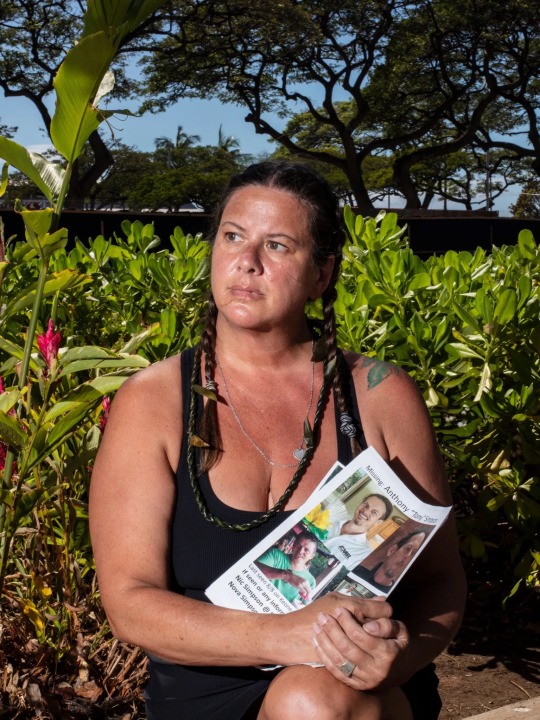
Nichol Simpson, holding a missing-persons flyer for her brother Tony, who was unaccounted for in the weeks after the fire.
Nichol soon learned that a large percentage of victims were recovered within a few blocks of Simpson’s home. When she told other families on the island where her brother lived, they’d offer condolences. Nichol tried to visit Simpson’s house in the burn zone but was stopped by the National Guard and told she needed an official escort. She called the police, and a receptionist suggested that she call the E.O.C. When Nichol asked what the E.O.C. was, the receptionist didn’t know. (E.O.C. is the Emergency Operations Center.) Nichol reached a person at the E.O.C., but learned that she could not, in fact, get an official escort into the burn zone. She was also told, by a field worker, that the residential area had been fully searched. That is, except for multistory buildings. This only confused her more. Simpson’s house was two stories. Had it been searched? Unclear.
Nichol and Priest talked to unsheltered people in encampments. Simpson had a strong tie to that community; he had moved to Maui with a friend who chose to live outside. “We’re literally stopping people on the street and asking them, ‘Do you live here? Can you help us find a place to go search?’ ” Nichol told me. “Tomorrow we’re going to find some random cave somebody suggested.” I asked if they really believed that Simpson was hiding out somewhere. “Absolutely,” Nichol said. Simpson had led an eclectic life. He lived off the grid for two years, “on mangoes, basically, like a friggin’ fruitarian.” She added, “We could just see him showing up later with some crazy story.” Like he’d been living in a cave for two weeks. “Maybe he can make a big Hollywood movie about it,” she said, letting out a belly laugh. “Actually, he would hate that.”
After ten days, Nichol and Priest decided to fly to Belize to be with her parents. Before they left, they drove to the Lahaina post office to get Simpson’s mail forwarded to them. “We were really grasping at straws for small things that I could take back to my family,” she told me. “Because we have nothing of his.” This was true of many victims’ families. The Galinatos had lost most of Alfredo’s belongings, although his wedding ring had been recovered by search-and-rescue workers.
On the way to the post office, Nichol received a call from the Maui P.D. The police had matched her DNA with her brother’s remains, which they had found on August 11th—twenty-one days earlier—in a burned structure near his house, along with the remains of several others. As people had sought shelter, they landed in others’ homes, businesses, or cars, and in some cases died together. The location and commingling of remains delayed the processing of samples, and comparisons with the families’ DNA. This situation also resulted in an initial overcount of victims; two different body bags might later have been found to contain one person.
Nichol was not only heartbroken by her brother’s death but frustrated by the lack of clear communication from the authorities. “We’re thinking, They’ve recovered a hundred and fifteen bodies. They’ve recovered no more in several weeks. We don’t match any of those bodies, so Tony must still be missing,” she told me. “It brought us a lot of false hope.”
The Morning After the Fire, when Saribay was leaving the church parking lot, he saw smoke in the direction of a house belonging to his kids’ grandparents, in a neighborhood called Leiali‘i. He drove there and found his brother, who told him that another house, bordering their friend Archie Kalepa’s property, was smoldering. The fire department had already been there, but the fire had flared back up.
Saribay and his brother ran across neighbors’ gardens, grabbing more hoses. They broke Kalepa’s fence and soaked his yard. Saribay’s shirt had melted the night before, but he’d found a backpack containing women’s clothes that he had changed into. Saribay has a mischievous streak, which, despite what he had been through, hadn’t gone away. “I fucking fought that motherfucker while I was in a red fuckin’ blouse,” he said.
They extinguished the fire. Leiali‘i had been built seventeen years ago, as part of the Hawaiian Homes Commission Act, which allots homesteads to people who have at least fifty per cent Hawaiian blood. And the neighborhood was saved. Of its hundred and four houses, only two burned down. “At 10:30 p.m., when I evacuated, the flames were as high as the trees right behind my house. I thought it’d be gone,” Rodney Pa‘ahana, the president of the Leiali‘i Association, a community group, told me. “We were astounded,” he continued. “God put a finger on us, as if to say, The Hawaiian people need to stay and rebuild.”
Kalepa had been in California during the fire, but he came home on the first flight he could. When he arrived, Saribay apologized for breaking his fence. “Fuck my fence!” Kalepa told him. “You’re the guy who saved my house!” Within forty-eight hours, that house became one of Maui’s first community-organized emergency hubs. Kalepa told me that the donations, which ranged from money to food and supplies, had been overwhelming. People were sending poi—a traditional Hawaiian staple consisting of paste made from ground taro—from four islands away. Lahaina residents started calling the house “the local Costco.”
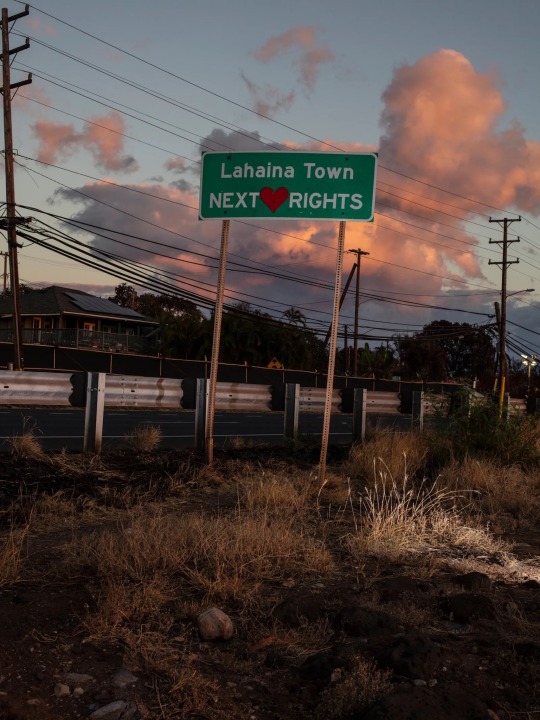
The cost to rebuild Lahaina will be an estimated five and a half billion dollars.

“We have one chance of fixing this,” Archie Kalepa said, of the rebuilding process. “And, if we get it wrong, all of Hawaii’s going to fail. Not just Lahaina.”
I met Kalepa on the cul-de-sac outside his house in late August, under a cluster of pop-up tents. There were more than two dozen coolers, towers of water bottles, Clorox wipes, a bleeping Starlink router (for Internet), and a machine that converted moisture from the air into water. Friends and volunteers were lugging boxes and ice, setting up rooftop solar panels, and peeling bananas to make banana bread.
Kalepa asked if I wanted to see the line where Saribay had held off the fire, gesturing toward the back yard. It all seemed fairly normal. But at the edge—beyond the grass, palm fans, magenta stalks, and yellow frangipani flowers with pink centers—there was a gap where the fence had been. On the other side of that gap, the world was suddenly black-and-white. A foundation of scorched cinder blocks suggested the ghost of a house. Rusted rebar poked the air. There was a shovel, bent like a bow tie. A hollowed pickup truck was snapped in half. The air was stagnant with the lingering, acrid smell of smoke, rot, and death.
Kalepa, a ninth-generation Hawaiian, recently turned sixty. He is a former lifeguard and big-wave surfer who provides ocean training to Navy seals. In the weeks since the fire, he has become one of Maui’s most prominent community leaders. “I never wanted to be in this position,” he told me. “I was really enjoying my life.” He is now serving on Mayor Bissen’s five-member Lahaina Advisory Team, which will consult on the town’s rebuilding. “We have one chance at fixing this,” Kalepa said. “And, if we get it wrong, all of Hawaii’s going to fail. Not just Lahaina.” One of the community’s biggest fears is that the process will favor developers, tourists, and the wealthy. Kalepa, other activists, and water-rights groups have been strenuously advocating for the local community. On September 8th, Governor Green announced that he was reinstating the state’s water code. Several weeks later, the water deputy, M. Kaleo Manuel, was returned to his post.
An organization called the Fire Safety Research Institute has been selected to investigate the government’s response to the catastrophe. Initial findings are expected by December. But responsibility for the fire falls in many places, on many individuals, across the decades. “For the last hundred and fifty years,” Kalepa said, “Hawaii’s gone in the wrong direction. This situation we’re in right now? It brought that to light.”
People Often View disaster survivors’ stories as they would an apocalypse film—a frightening but faraway and anomalous event, witnessed from a safe place. But these stories are missives from our immediate future—postcards from what, one day, might be your circumstance, in this era that some climate-change experts now call the Pyrocene. Record-breaking wildfires are happening more frequently all over the world, with studies directly linking climate change to the increase in fire duration, size, and severity. Wildfires in the U.S. caused more than eighty billion dollars in damage from 2017 to 2021, a nearly tenfold increase from the previous five years.
Hawaii has made gestures at addressing climate change; in 2015, it was the first state to pledge to convert entirely to renewable energy by 2045. And yet critics have jumped to blame the power company, Hawaiian Electric, for focussing on renewables, claiming that it was doing so at the expense of maintenance that could have prevented the West Maui fire. Similar debates are playing out all over the country, where the same funds required for infrastructure maintenance and improvements, in this hot new world, are also needed for the green-energy transition.
Hawaiian Electric’s C.E.O., Shelee Kimura, testified at a congressional hearing that thousands of aging utility poles had not been tested for termites or rot since 2013, but she also said that power lines had been de-energized for more than six hours before the afternoon fire began, and that the company was therefore not responsible. Her assertion, and the fire’s true cause of ignition, are under investigation, and the company now faces more than a dozen lawsuits, including one filed by Maui County.
On October 8th, the two-month anniversary of the fire, Governor Green welcomed tourists back to parts of West Maui. Many community members were outraged; they felt that they weren’t near ready. Just a few days later, more human remains were found in Lahaina. Six people are still missing, and there is one body that has not yet been identified. “Imagine what happens when you gotta live in temporary housing, surrounded by ash, and go to work back in those hotels,” Nā‘ālehu Anthony, a filmmaker and an activist, told me. “People just hit this wall where they’re saying, ‘We’re not going to do that anymore.’ ”
Even though returning to work was hard to stomach, it was crucial to Maui’s economy, which is heavily reliant on tourism, and necessary for residents, who were struggling with bills and insurance. Many residents were worried about their mortgage payments, which are still due even after your house burns down. “For what, a piece of dirt?” Saribay said. His kids were O.K., which was “all that matters,” he said, but he had lost three of his houses, his tattoo parlor, and his boat. He was living in his kids’ grandparents’ house in Leiali‘i. Saribay told me that he had taken a forty-hour course to obtain a hazmat certification, so that he could be part of the effort to clear the rubble from Lahaina. But the idea had become a nightmare. “I just don’t want to be in there right now,” he said.
“Fifty to sixty per cent of the people that passed away was from my neighborhood,” Saribay told me. He has been dealing with trauma: “My nights are a fucking question mark,” he said. “I’m so tired. My mind races.” He has thought about leaving Hawaii altogether, and has felt financial pressure to sell his land—a common experience among homeowners, some of whom reported receiving calls from real-estate investors just days after the fire. “I could just be outta here and say, ‘Fuck Hawaii,’ ” Saribay continued. “I’m not gonna, but fuck.”
He has had delays with his fema relief application—he still doesn’t know how much money or what kind of housing assistance he will get.“Everything will be O.K. if the government really helps us, but they’re not,” he said. “It’s the people of Maui who’s helping each other.”
One Friday evening, I attended a community meeting at Kalepa’s house, which had become a weekly event. People offered advice, consolation, ideas. One man discussed new air purifiers that had been donated by a nonprofit, which residents could take home with them. Pa‘ahana, the Leiali‘i Association president, gave a teary speech arguing that Lahaina should be rebuilt as a giant beach park, with all the shops and homes staying up near the highway. “I know I’m gonna get a lot of flak from the billionaires and businesses,” he said. “But, if we do this right, they will thank us when we’re not here anymore.” As he spoke, fat raindrops started falling. Kalepa told the crowd, “The blessings are pouring out for us.”
Many Hawaiians want to make this moment an opportunity. “It’s very rare to have people plan a new town after hundreds of years of history,” Pa‘ahana told me. “But we get a chance.” The tropical shower stopped as suddenly as it had started. A line of volunteers carried platters of opakapaka, venison, coconut, and poi to folding tables set up in the cul-de-sac. Saribay was bopping around, taking pictures of the food and cracking jokes. “He’s so full of life,” Kalepa said, grinning in his friend’s direction. As it got dark, kids sat on the asphalt playing duck-duck-goose. Anthony, the filmmaker, told me, “The reason Archie Kalepa stood this up is because his community needed help, and because the idea of aloha is not how much you can keep. It’s how much you can give away.”
The first week and a half after the fire, apart from the machinery and the dogs, Lahaina was silent. No birds or bugs were alive. But even among the ashes there is virescence. The oldest banyan tree in Lahaina, planted a century and a half ago, beaten and blackened by fire, has sprouted green buds. They appear to glow against the surrounding moonscape, like time travellers from our once and future planet. ♦
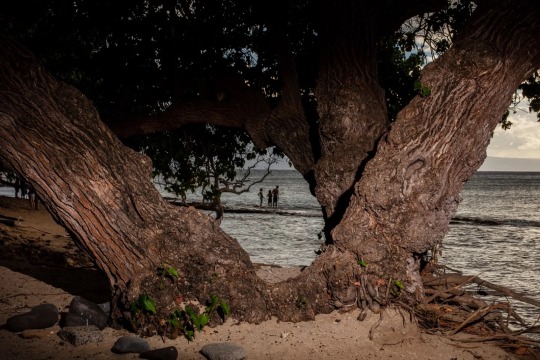
“Everything will be O.K. if the government really helps us, but they’re not,” Saribay said. “It’s the people of Maui who’s helping each other.”
0 notes
Text









It happend...
73 notes
·
View notes
Photo
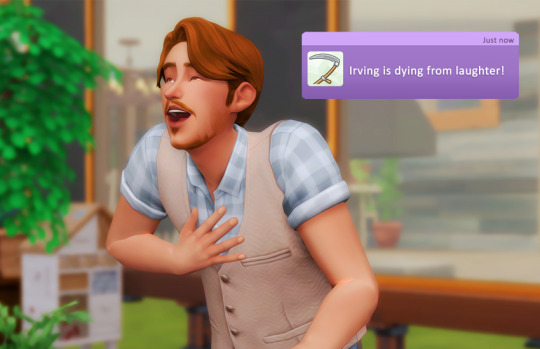

this was literally THE NEXT DAY
when I tell you I was surprised I genuinely mean it I stared at the screen for a long long time and to this day I’m not over it
#the sims 4#ts4 gameplay#midnight sun redux#msc challenge#midnight sun challenge#truffle:1#irving trimble#truffles
189 notes
·
View notes
Photo
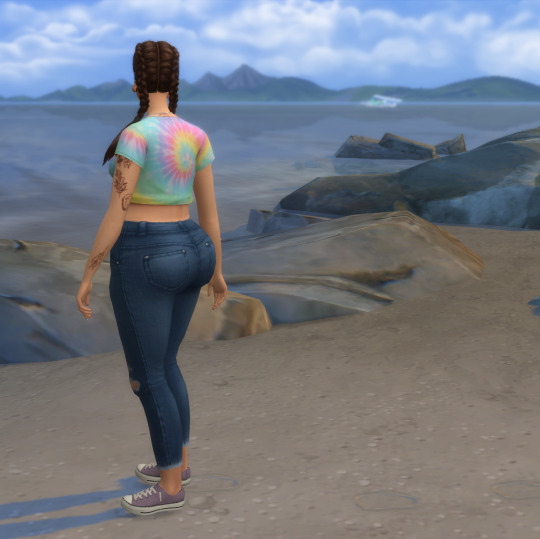
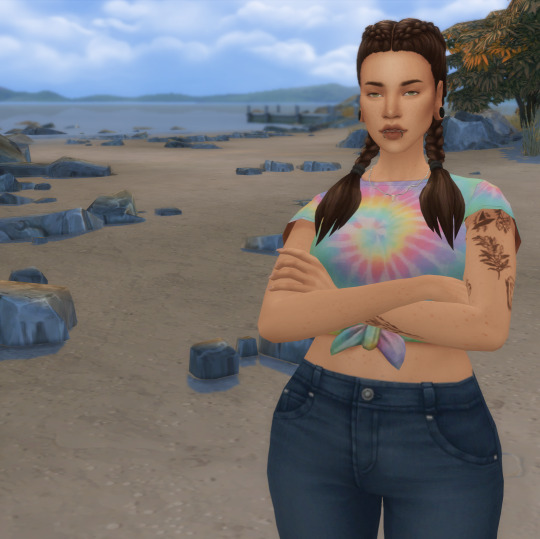


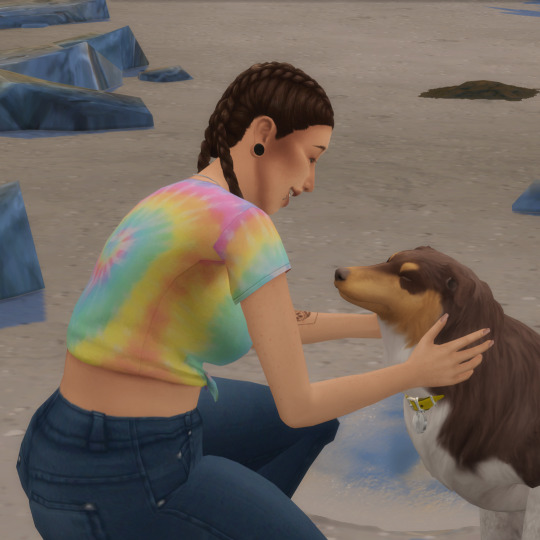
Dol Kellogg (and her trusty pal, Scout) washed ashore a deserted island with no memory of how or why she ended up there. Keep up with Dol as she navigates the trials of her new life.
Generation 1: The Drifter
The first to wash up on the deserted shore, Dol finds herself in complete and utter isolation, remembering very little about where she came from or how she got here. With no way to return to wherever she came from, she must learn to survive or suffer an untimely end.
Main Objectives:
☐ Have another sim wash up on the island, and pursue a romantic relationship with them ☐ Your partner must have the Clumsy or Gloomy trait ☐ Have no more than 2 children ☐ Master fishing skill ☐ Master cooking skill ☐ Complete Angling Ace aspiration ☐ Build a small dwelling with just enough space for your family
#isle of the midnight sun#isle of the midnight sun redux#softerhaze#iotms gen 1#dol kellogg#scout#dol#iotms dol
8 notes
·
View notes
Text
Welcome to the Isle of the Midnight Sun

It was just before sunrise on a gloomy mid-May morning when Isla Hook decided to take her surfboard out for a quick ride. It was also her 21st birthday. Despite the strong wind and frigid lake waters the air was unseasonably warm, and the quiet shores of her father's hometown in Windenburg were all but deserted aside from Isla herself. Having donned her bathers in the car, she grabbed her wetsuit and tucked her well-loved surfboard under her right arm as she headed toward the lonely beach...
#isle of the midnight sun#isle of the midnight sun challenge redux#midnightsun#gen 1#ts4#sims 4#sims#simblr#ts4 gameplay#ts4 legacy#ts4 challenge#midnight sun#midnight sun challenge#first post!!!#strawberrysimsforever
10 notes
·
View notes
Photo

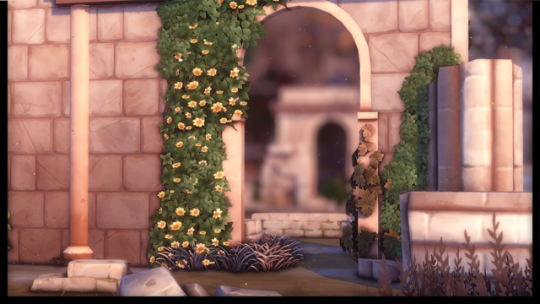
lot by @galaxysuede !!
290 notes
·
View notes
Photo
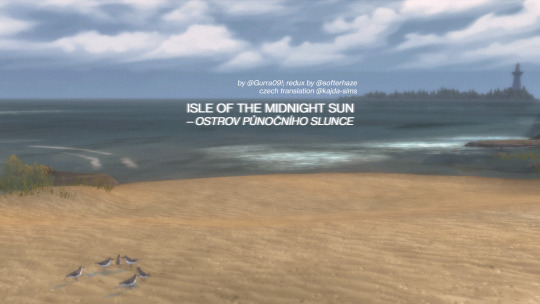
ISLE OF THE MIDNIGHT SUN — OSTROV PŮLNOČNÍHO SLUNCE redux výzvy od @softerhaze všechny zásluhy za výzvu patří Gurra09! překlad do češtiny @kajda-sims
„ Probouzíš se uprostřed odlehlého ostrova, aniž by sis vzpomínal na svůj život, nebo na to, jak ses sem dostal. Bez vzpomínek na domov nevíš, kam se vrátit, a tak nemáš jinou možnost, než začít nový život na ostrově Půlnočního slunce.”
Cíl: Přežít na prázdném ostrově dokud nesplníš úkoly páté generace. Herní rozšíření: Roční období (není nutné, ale uvidíš podle obsahu výzvy), Společná zábava, Únik do přírody, Dobrodružství v džungli
Obecná pravidla
Vytvoř mladého dospělého simíka, vlastnosti a aspirace jsou na tobě . Můžeš pro něj vytvořit i chlupatého čtyřnoného parťáka.
Nastěhuj se na pozemek o velikosti 20×20 na ostrově ve Windenburgu. Vystěhuj všechny ostatní domáctnosti a zbourej všechny stojící domy, aby ses stal jediným obyvatelem ostrova.
V tomhle bodě výzvy svůj pozemek můžeš doplnit zelení a též i nějakými nezbytnými základními objekty.
Použij cheat a finance své domácnosti nastav na 3,000 simoleonů — otevři cheatovací řádek pomocí ctr + c a napiš testingcheats true, potvrď entrem, poté napiš cheat money 3000 a opět potvrď.
Ujisti se, že máš zapnuté stárnutí a věk nastavený na normální délku života. Roční období by měli být nastavené na délku jednoho týdne. Poté už se můžeš vrhnout na výzvu!
Základní přehled výzvy: Kromě cílů každé generace tato verze výzvy Půlnočního slunce přidává pár nových herních mechanik.
Festivaly: Festivaly se pořádají vždy poslední dva dny na konci období a jsou pro tebe šancí, jakse svým simíkem cestovat a potkat simíky i mimo tvou domácnost. Pokud chceš, můžeš cestovat do Žulových kaskád, nebo do Selvadorada. Je to na tobě a můžeš navštívit všechny destinace a všechny festivaly (po aktualizaci přidání kalendáře i do základní hry můžeš konání festivalů sledovat v kalendáři). Festivaly však nejsou povinné a můžeš je vynechávat.
Rozšiřování pozemku: Některé generace vyžadují přestěhovali na jiný pozemek, nebo využití toho, na kterém jsi už hrál. Pro stěhování můžeš použít herní systém přesunu simíků na jiný pozemek, ale pro třetí generaci můžeš pozemek koupit jako obchod, pokud vlastníš potřebný balíček, i když ho budeš využívat jen jako zahradu. Pokud potřebný balíček, nebo rozšíření nevlastníš, můžeš postupně zařizovat obyčejný pozemek a vždy si odečíst peníze z účtu domácnosti podle toho, kolik peněz utratíš na obecním pozemku.
Dědici: Většina generací vyžaduje konkrétního simíka z generace předchozí, ale pokud se tímto pravidlem cítíš svázán, můžeš si vybrat jakého dědice budeš chtít.
Základní pravidla: Cheaty a módy ulehčující výzvu jsou striktně zakázany, kosmetické cheaty jsou povoleny. Během výzvy není dovoleno používat žádné prostředky měnící věk. Kromě toho nesmí vaši simíci nesmí opustit ostrov, nebo navázat komunikaci s jinými simíky mimo svou domácnost pokud nejsou na festivalu. To znamená, že žádný ze simíků v domácnosti nesmí mít klasickou práci, chodit do školy, nebo rodit v nemocnici. Všechny vlastnosti simíků po první generaci musí být náhodně vybrány, pokud pravidla generace nestanoví jinak.
Generace první — TULÁK „ Jsi první, koho moře vyplavilo na opuštěný ostrov. Ocitáš se v naprosté izolaci, nevzpomínáš si, kdo jsi ani odkud pocházíš. Když nevíš, kam se vrátit, musíš se naučit přežít, nebo trpět předčasným odchodem. ”
Hlavní cíle:
Nech na ostrov vyplavit dalšího simíka (může to být tebou vytvořený simík, nebo townie simík) a navaž s ním romantický vztah
Tvůj partner musí mít vlastnosti nešikovný, nebo zasmušilý
Měj pouze dvě děti
Mistr dovedností rybaření a vaření
Splnění aspirace Rybářské eso
Postav malý příbytek, tak akorát pro tvou rodinu
Generace druhá — STAVITEL „Tví rodiče se vždycky pokoušeli poskládat si dohromady vzpomínky ohledně jejich života, před objevením na ostrově, pro tebe je ale tohle místo to jediné, které znáš. Chceš, aby se ostrov stal tvým; domovem, který v něm tvoji rodiče nikdy neviděli.”
Hlavní cíle:
Jako mladý dospělý se svou rodinou přestěhuj na prázdný pozemek 40×30 na ostrově
Postav dům větší, než na minulém pozemku (nejsou zde žádné konkrétní specifikace, prostě si postav hezký útulný ostrovní dům)
Lásku svého života potkej na prvním festivalu, na který se vypravíš a vem si ji jako mladý dospělý
Se svým partnerem měj nejméně 3 děti
Mistr dovedností logika, psaní a zručnost
Generace třetí — OPATROVNÍK „ Jak jsi vyrůstal, sledoval jsi rodiče, jak se pro tebe a tvé sourozence snaží na ostrově vybudovat lepší domov. Za každý kousek domova ale padl i kousek ostrova. Nechceš proto nic jiného, než to ostrovu vrátit, aby ti, kteří přijdou po tobě, měli také možnost na ostrově přežít.”
Hlavní cíle:
Musíš být prostředním dítětem předchozí generace
Nikdy se neožeň/nevdej a měj pouze jedno dítě
Mistr dovedností bylinkářství a zahradničení
Staň se nejlepším kamarádem svého dítěte
Zajisti, aby tvoje dítě mělo na maximum všechny batolecí dovednosti a kreativní dovednost
Pozemek svých prarodičů proměň v prosperující zahradu
Dokonči aspiraci Botanik na volné noze
Generace čtvrtá — MÚZA
„ Dětství jsi trávil v bujných zahradách, nasáváním slunečního světla, toulání se po ostrově se svými bratranci a sestřenicemi. Neustále ses snažil tyto okamžiky zachytit, proměnit prchavé pocity v něco hmatatelného, co lze sdílet. Věnuješ zpěvu, tanci, malování a psaní, abys našel způsob, jak je zhmotnit na věčnost.”
Hlavní cíle:
Měj nejméně jedno dítě a nejméně tři romantické vztahy
Mistr dovedností malování, kytara, zpěv a tanec
Podle předlohy namaluj obraz ostrova — mistrovské dílo
Napiš tři písně a zahraj je někomu mimo tvou rodinu
Dokonči aspirace Výjimečný malíř a Hudební génius
Generace pátá — OBJEVITEL
„Většinu času jsi v dětství trávil odpočítáváním dnů do dalšího festivalu, abys mohl potkat nové lidi. S každým dalším dnem se ti zdá ostrov menší a menší a ty myslíš jen na to, co se skrývá za jeho skalnatými břehy. Buď první, kdo po generacích ostrov opustí, a zjistí, co svět mimo něj nabízí.”
Hlavní cíle:
Mistr dovedností atletika, charisma a logika
Jakmile ovládneš tyto dovednosti, přestěhuj se do jiného světa dle svého výběru
Doknči aspiraci Nejlepší kámoš na světě
Vezmi si někoho, koho potkáš ve světe, kam jsi se nastěhoval
Považul výzvu na dokončenou, jakmile simík dosáhne dospělosti a tyto cíle budou splněné!
3 notes
·
View notes
Text









Double birthday... Sad day to be aging up! Sorry Bear..
66 notes
·
View notes
Photo


#would Iris ever NOT put her kid in a frog onesie lets be real here#the sims 4#ts4 gameplay#midnight sun redux#msc challenge#midnight sun challenge#truffle:1#ivan truffle#truffles
153 notes
·
View notes
Photo
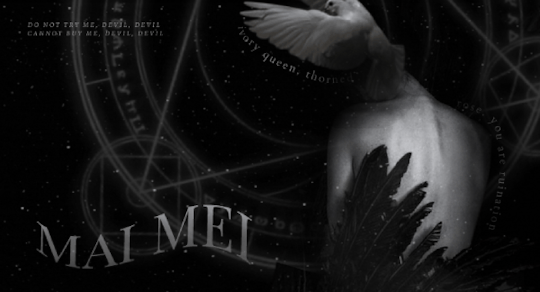



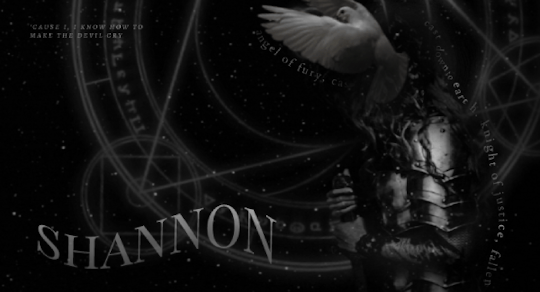
describe your character(s) without mentioning color, redux
「 IVORY QUEEN, THORNED ROSE. 」 ↳ Porcelain and shadow, silk and steel. The queen of the underworld is a morning glory twirled in iridescent taffeta, her lips bloodied with blossoming roses and her gown shot through with star-shine and moonglow, the skirts frothing with flouncing satin ruffles. There is a revolver sewn into the petticoats.
「 NIGHT KING, DIVINE DESTROYER. 」 ↳ Velvet and midnight, starfall and steel. The king of the underworld has hair that shines moon-pale, like stars winking out from the abyss; his eyes glitter like princess-cut diamonds and jagged shards of ice. All the life in them has been transformed into something gleaming and hard through scorching heat, blasting pressure, searing frost. Still–he is a distant sun, charming everything that comes into his orbit.
「 ANGEL OF FURY, KNIGHT OF JUSTICE. 」 ↳ Fire and fury, ichor and starfall. The fallen angel burns like scorching flame; the ashen skies are swirled with bruised thunderclouds, and she shines like a comet streaking across the horizon, setting the stratosphere alight with blinding brilliance. Her hair is suffused with radiant divinity, and her heart blooms with liquid amber into the darkness of night.
w/ @artless-whimsy ; full text under the cut!!
「 IVORY QUEEN, THORNED ROSE. 」
i. Porcelain and shadow, silk and steel. The queen of the underworld is a morning glory twirled in iridescent taffeta, her lips bloodied with blossoming roses and her gown shot through with star-shine and moonglow, the skirts frothing with flouncing satin ruffles. There is a revolver sewn into the petticoats.
ii. Ivory queen, thorned rose. Her eyes glimmer with calculated warmth, and her twinkling laugh weaves illusions of lilting summer birdsong and blooming forget-me-nots. Her face is flushed with life–or maybe that’s just rogue. You’re not sure.
iii. The queen of the underworld is silent as shadow, balanced on a sliver of stone hanging over the yawning abyss. She’s the eerie calm before a raging storm, whispering spider-silk and murmuring clouds spiraling through silvered skies, soft as hyacinths and hushed like deadly nightshade. Her power is faint wisps of smoke swirling around you and settling into your pores, crushed over your jugular before you even realize that it’s there.
iv. In the burning plains, the sunlight cuts straight to the bone, piercing and blinding and bright, and the arid heat bleeds the land to dust, coils itself into your throat and chokes out all the moisture. The onset of dusk is hope, and roiling thunderstorms are promises of rain and reprieve: the darkness is life, and chaos is salvation. The queen of the underworld is that moment before the heavens shatter in two; the ashen penumbra of smoldering twilight.
v. For all that her heart is ribbed with hard steel and ricocheting moonlight, there is still a gentleness to her, soft like morning dew. She tells you that you have nothing to fear from her, and you believe her.

「 NIGHT KING, DIVINE DESTROYER. 」
i. Velvet and midnight, starfall and steel. The king of the underworld has hair that shines moon-pale, like stars winking out from the abyss; his eyes glitter like princess-cut diamonds and jagged shards of ice. All the life in them has been transformed into something gleaming and hard through scorching heat, blasting pressure, searing frost. Still–he is a distant sun, charming everything that comes into his orbit.
ii. Night king, divine destroyer. He has fine features and a smile that shimmers like spun silver; a laugh like the delicate, dazzling luminosity of gemstones spilling across the night sky, roiling clouds drifting away to reveal their brilliance. He is a silken cold that creeps into the edges of your senses and sinks itself into the crevices of your soul until you don’t remember a life without it; whispered suggestions and flickering glances, compelling without the victim ever realizing they are being compelled–numbing everything that makes them alive.
iii. The king of the underworld is tall and slender, with all the dainty grace of a ballerina, poised on the knife’s edge of rigid control and quicksilver fluidity. His gloved fingertips that flutter and flit like butterflies, and he wields his power like a dancer floating into a soaring grand jeté, with steps that are light as air and muscles and tendons pulled taut, hard as iron. There is a heartrendingly-thin boundary between stone-willed restraint and the flowing elegance of release, and the king of the underworld holds an arabesque en pointe between them.
iv. He is the rain that glides downward with gravity during a desert thunderstorm, following the forces of the universe and misting away into the hissing air before it ever has the chance to splatter clumsily across the ground.
v. He tells you that there is nothing to be afraid of. You want to believe him.

「 ANGEL OF FURY, KNIGHT OF JUSTICE. 」
i. Fire and fury, ichor and starfall. The fallen angel burns like scorching flame; the ashen skies are swirled with bruised thunderclouds, and she shines like a comet streaking across the horizon, setting the stratosphere alight with blinding brilliance. Her hair is suffused with radiant divinity, and her heart blooms with liquid amber into the darkness of night.
ii. Angel of fury, knight of justice. She is the storm that tears the world in half, the raging tempest that follows silken, shadow-spun calm, shattering the heavens in two: sun-charred lightning cast down to earth, incandescent with charged atmosphere. Blazing electricity crackles and dances at her fingertips, and she is more alive than anything you have ever seen.
iii. She is angel-glass, the pearlescent stone skidded over the hills like ricocheting moonlight in the half-dark of smoldering twilight. She’s burning divinity fused with earth and quartz: holy fire singed across dust-seared desolation, the glory-gleam of paradise and the harsh, bone-dry heat of the desert coming together in a burst of angel-kissed inferno. She’s fierce winds and piercing sand and blessed flame melded all into one, crowned with a halo of sun-scorched starlight.
iv. Her power is fury and it is life. She wields jagged shards of roaring lightning and molten starfire, and she is the rain that glides downward with gravity during a desert thunderstorm; she is all the forces of the universe that drive it to the parched ground, stubbornly defying the hissing heat that threatens to smother every last bit of moisture into mist.
v. Her eyes are glittering and alive, and you are afraid. You run, and she doesn’t try to stop you.
13 notes
·
View notes
Photo

Sable Fay Midnight Sun Challenge - Founder
Hello! I’m christening my simblr by attempting the Isle of the Midnight Sun Challenge Redux by @softerhaze (thank you for re-inspiring me for my gameplay with this!).
This is our founder, Sable Fay. We begin when she has found herself alone on an empty (she believes) island. I’ve really enjoyed playing this family so far, so I hope anyone who reads this will enjoy their story as well.
#yes she's named sable bc animal crossing i have no imagination#i'm suuuuuuper rusty at photo editing and i don't have reshade so pls bear with me for a while#i just like taking pics of my sims#ts4 legacy#ts4 midnight sun challenge#sims 4 legacy#msc#this'll be the tag for this challenge at least for now
4 notes
·
View notes
Note
Would you consider a prompt? I have been home from a unexpected and long hospital stay for just a couple of days. The news is all good, but I am tired and it's freezing and gray and rainy here. I am amazed at the level of loving support from my husband and I feel so loved. So I am thinking of Scully, home from the hospital after Tithonus or Redux II or FTF and wondering how that "coming home" goes for her - and Mulder of course. Fic is Medicine Anon
And prompt 39 from the cliché list for @edierone ‘Having a bad day and the other noticing’. Thank you to @chekcough for your excellent betaing.
Living Better: fic
There’s a newness about everything. A sheen of hope. The sun is bright, the sky open, the world seems wider. The furniture in her apartment gleams, her plants are healthier, lush. Her mother must have been in, cleaning and tidying as though hygiene and order could turn around the march of the cancer invading her daughter’s body.
Scully is grateful. She is. Whatever quiet miracle took place over the last few days, she’s been given a second chance and this homecoming, however unremarkable (I’ll be fine, mom), is a new start.
Before. After.
Still, everything feels Herculean. Where there should be wings of freedom, she’s weighted down by invisible cargo. There’s a roiling mass of ingratitude inside her. A fist of anger or shame or bitterness. During her fight against the disease, her mind had accepted her fate and now it’s like her spirit is pissed that she’s having to live again. There’s a nagging voice in her head. You should be doing more, Dana. You should be out there living. Life rushed by once before, don’t let it disappear into the rearview mirror again.
She should be free. Free to feel. She knows she should feel more. People have revealed themselves, their true selves, to her these past months. And Mulder. There’s Mulder. A hero who went in to battle. Who won. And now? Happily ever after is a load too heavy to bear.
With late afternoon shadows playing over the floor of her living room, she’s sitting on her couch, knees tucked under her seat, robe pulled around her frame, still bony and paper-skinned, prone to the cold. Aromatic steam wafts from her cup. Peppermint tea helps with the lingering nausea. There’s a romantic comedy playing in the background and she’s trying to read the novel that Tara presented to her with a ‘I’m sure you’ll love it because I did and we’re related…’ smile. It’s not really her thing, but she has time, once a luxury, to read, to rest, to do nothing.
After a while, the words blur together and the movie’s credit rolls. Her stomach is empty and she knows she should eat. Her mother insisted on leaving cooked meals in the freezer but she has little appetite and her sense of smell has all but disappeared anyway. Where is the joy of food when it’s been reduced to just a necessary fuel?
As the plastic tub of pasta revolves on the plate in time with the drone of the microwave, she remembers the slop from her night in prison, and gags. Not just at the memory of the soggy grey mess of that stew, but at her resolve to be strong for Mulder, to protect him. She fears that resolve has disappeared, along with the cancer. Back then, when he walked into the senate hearing and smiled at her, she’d felt something more than relief. She could admit that now. At her bedside one night recently, he’d collapsed in tears, clinging to her hand like a child. She’d kept her eyes closed for fear of humiliating him further. He was hanging on to life by the same spidery thread she was.
And now they have to move on with life as though nothing has happened.
She throws the dinner in the garbage bin.
Sleep evades her again that night, nightmares swirling around her mind, shadowy figures clawing at her as she tries to run, her feet mired in a squelching, sucking bog. The flash of a bullet. Mulder’s temple exploding. His hot blood splattering over her face.
She shoots up, the beating of her own pulse too loud in the predawn stillness.
Something outside of her control demands to hear his gravelled voice. Calling his number is an impulse. He answers, fear edging his voice. She remembers telling him she’s okay, but the rest of the conversation is lost to the void of her memory. A symptom she hopes is only temporary. Now, Scully pads from her bedroom, drawing her forefinger and thumb along the edges of her cheekbones. Hollow. She rests her hand over her stomach, concave. The points of her hips jutting out. Gaps and sharp edges everywhere.
There’s a hazy film of dawn across the kitchen. As she waits for the tea kettle to boil, she’s lost in the mist frosting the window, the ragged edges of it blooming out before receding to nothingness. Just a dot on the glass. She presses the pad of her finger to it and breathes, leaving a trace of herself on the pane. A sharp rap at the door makes her startle, her elbow knocking over the vase her mother gave her when she bought this place. She meant to put it back in the cupboard. She meant to keep it safe.
Mulder’s inside before she can move to find the dustpan, weapon in his hand, yelling her name. If she had the energy, she’d laugh. Instead, she sinks to her knees, feels the gritty shards of porcelain digging into her skin. Her sigh is ragged, the exhalation physically painful.
“Are you okay?” he says, kneeling next to her. She can sense his hand hovering over her shoulders and she wills him to lower it, to feel the warmth of his touch. Instead, he starts to pick up the broken vase.
She heaves herself up and takes a bag from the tidy under the sink to dispose of the pieces. As Mulder places the larger pieces carefully inside, he looks down at her but by now she’s unable to meet his gaze. His scrutiny will crack her open just like the vase and if she falls apart, she’ll never be put back together.
“You’re bleeding,” he says, without alarm, but he takes the bag and leaves it in the sink before bracing her shoulders, turning her into him and leading her to the couch. “Sit.”
It’s strangely comforting to be ordered about by him. She obeys, exhausted. It’s then that she sees the pearls of blood dotting her legs, collecting in the longer threads of her robe. A sharp diamond of porcelain is sticking out from the skin of her knee.
“Where do you keep your Bandaids?” Mulder’s voice floats over her as she watches the blood ribbon down her shin. She’s no longer shocked by its crimson brightness, having seen it leach from her body so often. But for Mulder, she realises, it’s a cruel reminder of past months.
“In the bathroom,” she says, nodding in the direction. She tries to say ‘thank you’ as he walks away, but the words dry in her throat.
Mulder returns with a first aid kit, unwraps the scissors from their plastic shield and removes the offending shard. She watches his lips form a silent ‘sorry’ as he dabs antiseptic lotion on her, but the sting is refreshing. She can feel it. He holds a cotton pad against her knee and she looks at his strong fingers across her skin. She sees her unshaven legs, her blue veins, her crumpled socks.
“I’m such a mess.”
No response. He dabs at her knee, lifting the pad to see if the bleeding has stopped. He disappears to the kitchen and returns with a glass of water.
“Sorry about the vase,” he says, sinking into the seat next to her.
“It was a gift from my mother. She’ll probably buy two more. She’s…just so grateful, you know?”
He nods. “I am, too,” he says softly. “Very much so.”
Tears burn the corners of her eyes and she presses a finger under her nose to stop the flow but it’s impossible. He lets her weep until she’s wrung dry. Exhaustion leaves her body trembling. He finds a blanket, God knows from where, and covers her.
“You need to give yourself time, Scully. You’ve been through…”
“Don’t say ‘an ordeal’,” she says wearily. She’s heard it from her mother, brother, Father McCue, doctors, nurses. She survived. Life shouldn’t be a trial.
“I was going to say ‘a lot’. It’s not just the cancer, Scully. Your work with me…the abduction, your sister. It all adds up. This disease…how close it came to…” He stops, taking a shallow breath and rubbing at his stubbled chin. “In a funny way it made me reassess everything. That sounds selfish…it’s not what I mean. I…guess that you…not being here would change... everything. You mean more to me that you know, than even I knew.” He looks at her, eyes wet, and laughs in surprise at his own admission.
“Mulder…”
“It’s true! It took your death sentence to stop me suffocating up my own ass.”
A giggle wells up in her throat, along with more tears. Her chest hurts. And she’s not sure if it’s pain or a coming back to life of sorts. His face lights up.
“What I’m trying to say is that this is a second chance. For you, for us, for the work…if you still want it.” His voice lowers and he presses a hand over her arm. “Scully, your health is the most important thing to me. And you need to take some time, as much time as you need.”
The silence of the night is heavy in her head. There were times in the hospital where the midnight hours would stretch elastically until she felt she were forever walking towards an elusive dawn. Time really was a construct. The hours on the clock held no meaning, yet they marked her life in increments – for treatments, for food, for visits.
“I do want to come back,” she says, finally. “I thought I would already be back. Recovery has been…more difficult than I expected.”
He chuckles. “Why does that not surprise me?” He taps her elbow with two fingers. “You are the strongest person I know but you’re also the worst at cutting yourself some slack.” His forehead crinkles, his voice barely above a whisper. “You have nothing to prove that you haven’t already, Scully. Especially not to me.”
“Mom keeps coming by and she’s so cheery and happy and it’s hard, you know? That sounds so selfish, but I keep thinking that I have a duty, some kind of moral obligation to live a better life now that I’ve…survived. It’s like the pressure of life has doubled, tripled, and I can’t even make myself dinner.” Her nails dig into her palms. How can she make him understand? She’s alive. She should be grateful, not bitching about her mom. She shrugs off the blanket, runs her hands down her frame. “I can’t even decide what clothes to wear so I just wear this. I brush my hair, put my earrings in, look at my make-up and all I think is ‘why?’. What’s the point? I’ve already beaten this disease. Isn’t that enough?” He pulls her into a hug and presses his lips to the top of her head. “Shouldn’t it be enough?”
His breath ruffles her hair. His chest moves up and down as he breathes and she listens to the solid, steady beat of his heart.
Releasing her, he takes both hands into his, holding them gently, bringing them to his mouth to press a soft kiss against her knuckles. There’s such reverence in his action. A kind of benediction for them both. “I think...I think you’ve put yourself under this pressure, Dana. Nobody, least of all your mother, expects you to leap back into work or life straightaway. I...I don’t want that. We all want you strong and healthy. And your mother, she knows you. Knows you’ll cut her off, give her a hand wave and an ‘I’m fine’.” He smiles. Gets her smiling too. “How many of those have you given out over the last few months, hey, Miss Scully?” He bounces their clasped hands between them. “I’ve heard more ‘I’m fines’ than I’ve seen aliens.”
She laughs at that. Mulder and his ridiculous puns are like the sun finally rising after an eternity in the dark.
He pulls the blanket over her lap and his, squashes a cushion behind his head, points the remote control at the television. “There’s a movie on that I know you’re going to love.”
Leaning against him as he chuckles at the scene playing on the screen, she looks around. There’s a newness about everything. A sheen of hope and the itch of wings forming on her back.
127 notes
·
View notes
Text
So I’ve been thinking about starting another legacy family because I like rotating between save files and I only have my midnight sun save that I’m really interested in playing rn... I just love legacy families! And I was looking into the I’m a Lover, Difference in the Family Tree, and NSB redux version challenges, but since I’ve been in an extra spooky mood lately I’ve decided to go with the Supernatural Legacy Challenge by Ashubii and Haids5897 over on the sims forums. I’m super excited and am going to spend the afternoon planning out the founder and their backstory. Hope y’all are doing well, wishing you happiness and health xx
#sorry for the paragraph of text lol#I'm just really excited to start a new save!!#esp a supernatural one because I ADORE them#although aside from the vampires the sims 4 supernaturals all suck lmao#thank god for modders and their endless talent!!#ramblings#strawberrysimsforever
11 notes
·
View notes